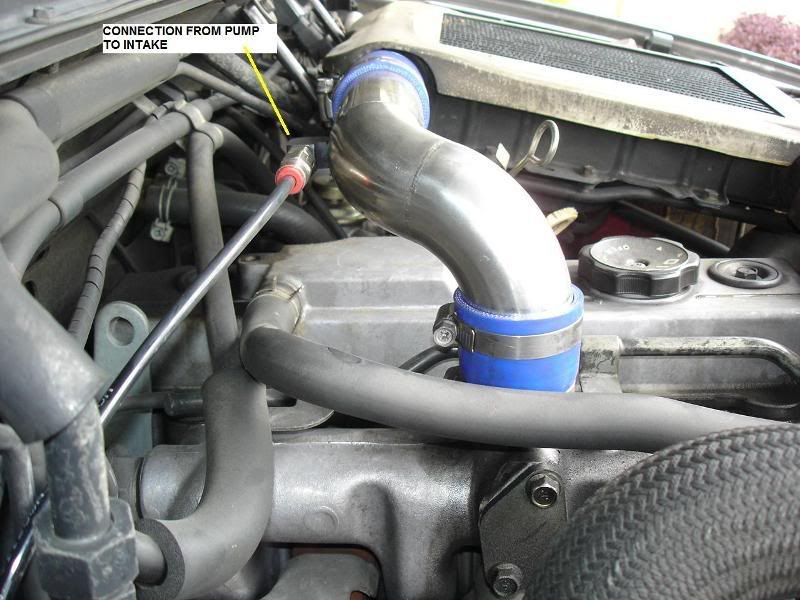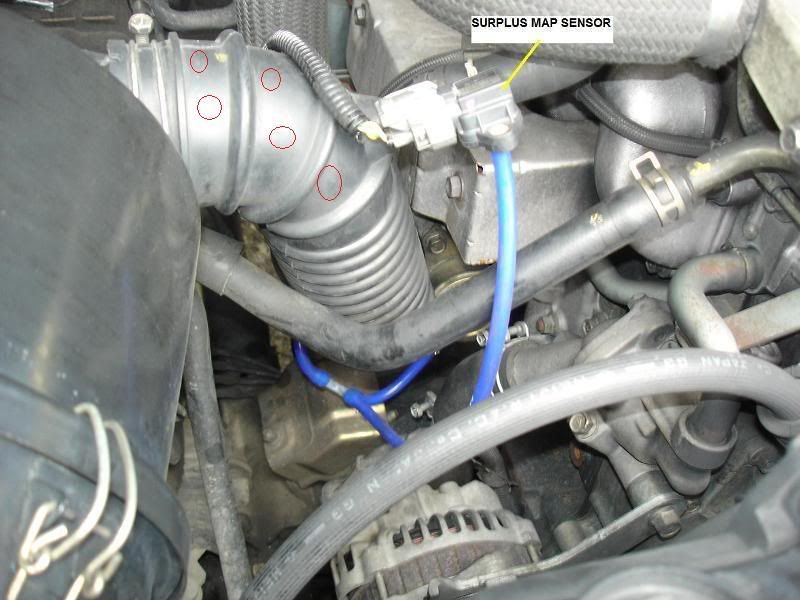Seems like everyone is contradicting each others! It's getting annoying at the end.
I'm posting below two decent links. The first one is the best pre-turbo forum discussion I found, it's over 25 pages but very very interesting. Just started reading it but they don't seem to be against pre-turbo in a properly built system.
http://www.aquamist.co.uk/phpBB2/viewto ... bo&start=0
Here's the second link on what another system is saying about pre-turbo injection. Again, similar type of kit (Alcohol injection system) at
http://www.alcoholinjectionsystems.com/ ... _info.html:
(I've pasted it, see below).
1. Pre-Turbocharger/Centrifugal Injection
By placing the water methanol injection nozzle or nozzles pre-turbocharger or centrifugal supercharger and injecting a fine precise amount of water methanol into the air inlet of the compressor can have a dramatic positive effect on compressor efficiency (particularly with turbocharger systems and high boost centrifugal applications) while substantially lowering discharge temperatures at the source of compression. On 8-25 psi applications, users can expect to see a 70-160+ degree drop in compressor discharge temperatures. While reductions of 160-240+degree's can be had on 25-60+ psi high boost applications such as diesels.
How is this possible?
When water methanol is first injected, we're able to begin slightly cooling the incoming air entering the compressor. This air is already relatively cool in relation to the ambient temperature of the day as it has yet to be compressed and heated. Depending on the temperature of the day and how the air inlet is plumped and where the air is being drawn in from, the incoming air entering into the inlet of the compressor commonly ranges between 5-20 degree's above ambient. Only minor cooling of the air charge occurs at this stage before it enters into the compressor. More importantly, we are about to dramatically cool the air that is being compressed and heated within the turbocharger.
It's important to understand it is here that the heat is being generated.
water methanol injectionA turbochargers impeller can spin at an astonishing speed between 100,000- 150,000 rpms. While centrifugal supercharger impellers spin between 40,000-65,000+ rpm. Between each pair of blades on an impeller exists a wedge shaped open space which the air fills in. As the impeller is spinning, this wedge shaped air pocket is subjected to tremendous centrifugal forces and is forced outward away from the center of the impeller to the outer edges. It is here where the air begins to stack up and compress against the compressor housing forming the heat as it makes it way into the scroll.
water methanol injectionAs the compressed air heats up, it tries to further expand, making it now more difficult for the heated compressed air to pass through and exit the compressor thereby lowering the compressor efficiency. In addition, this compressed air is taking up more space within the compressor limiting new incoming air from being processed. Furthermore, the hot compressed air exiting the turbocharger is less dense as it has been heated significantly. Therefore, containing less power producing oxygen while making the engine considerably more prone to detonation.
By cooling the air as it's being compressed within the turbocharger or centrifugal supercharger, the compressed air is now substantially cooler, more dense, taking less space and moves more efficiently through the compressor allowing us to pack and process more air through the turbocharger or centrifugal supercharger. This leads us to our second benefit. Improved compressor efficiency.
All of this results in improved compressor efficiency. Because of this improved efficiency the compressor does not have to work as hard to produce the same amount of boost as without the water methanol injection. In turn it raises the maximum mass air flow of the compressor. Thereby, making a smaller turbocharger or centrifugal supercharger now perform like a larger turbocharger or centrifugal supercharger with the addition of the water methanol injection.
water methanol injectionLastly, as already mentioned above, pre-compressor injection substantially lowers the discharge temperatures exiting the compressor. The engine is now less prone to detonation through this reduction in air charge temperatures. Furthermore, the use of an intercooler is dramatically reduced and in some applications no longer needed as it may not offer substantial further cooling effects in return for the pressure drop caused by it. Removal of the intercooler could now offer a further increase in boost pressure at the engine as well as compressor efficiency.
While all of this sounds very exciting. To do this properly requires proper sizing of the nozzles in relation to the compressor size and output. Additionally, the type fluid being used also effects the size of the water injection nozzle selected. When done properly, very little of the water methanol mist injected into the inlet of the compressor survives the process. Thereby, discharging a much cooler air charge with a relativity high humidity with very little or no water methanol droplets present.
When injecting water, we can quickly over saturate the air charge and have an excess of fluid discharging the compressor. Water has a much higher latent heat of vaporization, nearly double that of methanol, and does not flash (instantly evaporate) like that of methanol or other alcohols when injected into a hot air stream. Therefore, a smaller nozzle must be used when spraying pure water.
water methanol injectionA better choice for pre-compressor injection is a greater concentration of methanol vs. water or pure methanol. Methanol instantly flashes (evaporating) as soon as it enters into a hot compressor and meets the heat within it. By using an alcohol, this dramatically reduces the amount of actual fluid exiting the compressor due to it‘s fast evaporation. Additionally, methanol offers much greater cooling effect then water. Furthermore, methanol is also less dense then water thereby having a softer impact on the impeller. The specific gravity of pure methanol is .792 @ 68° F compared to water which is 1.00 @ 64° F.
One major concern associated with pre-compressor injection is erosion of the impeller. This is only likely to occur when injecting solid stream of water at the impeller of a turbocharger or using an excessively large nozzle.









